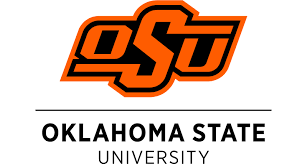Derrell S. Peel, OSU Extension Livestock Marketing Specialist
The fall feeder run is in full swing with calf prices moving counter-seasonally higher. In Oklahoma, the combined auction total last week was 40, 411 head of feeder cattle, up from 26,298 head the week prior. It is typical for the middle two weeks of November to have the largest weekly auction totals for the year. The Oklahoma price of 450-500 lb. M/L No. 1 steers was $184.95/cwt. for the week ending November 12. This was up $8.61/cwt. from the prior week for the same animals. Last week also included large sales of OQBN and Noble Integrity Beef preconditioned feeder cattle. The average price noted for value-added calves in the USDA-AMS report for the 450-500 pounds steers was $194.57, nearly $10.00/cwt. higher than the average price for similar steers. By contrast, the price for similar steers marked as unweaned was reported at $174.86/cwt, about $10.00/cwt lower than the average and about $20.00/cwt. lower than the price for the value-added calves. The value-added calves were valued $93.62/head more than unweaned calves and $45.70/head over average calves. In the last two weeks, I have collected auction sale data on over 13,000 head of feeder cattle at sales in Oklahoma, Kansas, Nebraska and South Dakota. This tour has highlighted the fascinating differences in the cattle, the ways the cattle industry works, and the cattle industry culture across the country. In general, all prices are higher week on week since early October with the highest overall prices, as is typical, in Nebraska.
Cull cow prices are seasonally lower in November but are actually holding quite strong. Oklahoma boning cow prices were reported at $62.01/cwt. for the week ending November 12, down 8.9 percent from the average August price. The average seasonal price decline for boning cows in Oklahoma from August to November is about 15 percent. The cull cow market continues to be supported by a strong lean trimmings market despite increased cull beef supplies. Cull cow slaughter continues to be higher year over year although the increase is smaller now than earlier. For the past eight weeks, beef cow slaughter has averaged 6.5 percent higher year over year. The eight weeks prior to that, in July and August, beef cow slaughter averaged 15.2 percent higher year over year. For the year to date, beef cow slaughter is up 8.8 percent over 2020 and is up 12.0 percent over 2019 levels.
Much of the increased beef cow slaughter is coming out of the northern plains where drought has been so severe this year. I compared Oklahoma boning cow prices to Montana to see if drought impacts were apparent. In both cases, prices have dropped seasonally since August but have fallen more in Montana, down 9.7 percent. On average, boning cow prices in Oklahoma and Montana average very close to the same level. However, in the first week of November, boning cow prices in Montana were $58.00/cwt, 9.3 percent lower compared to Oklahoma prices of $63.96/cwt. Montana boning cow prices have been significantly lower compared to Oklahoma since June of this year. Clearly the drought is impacting prices in Montana compared to Oklahoma. However, from another perspective, the overall cull cow market is higher year over year and although producers may be forced to sell cows due to drought, the prices have not dropped as much as sometimes happens in drought situations. One year ago, boning cow prices in Montana were $49.49/cwt. The general improvement in cattle markets is helping to offset some of the worst drought impacts.














